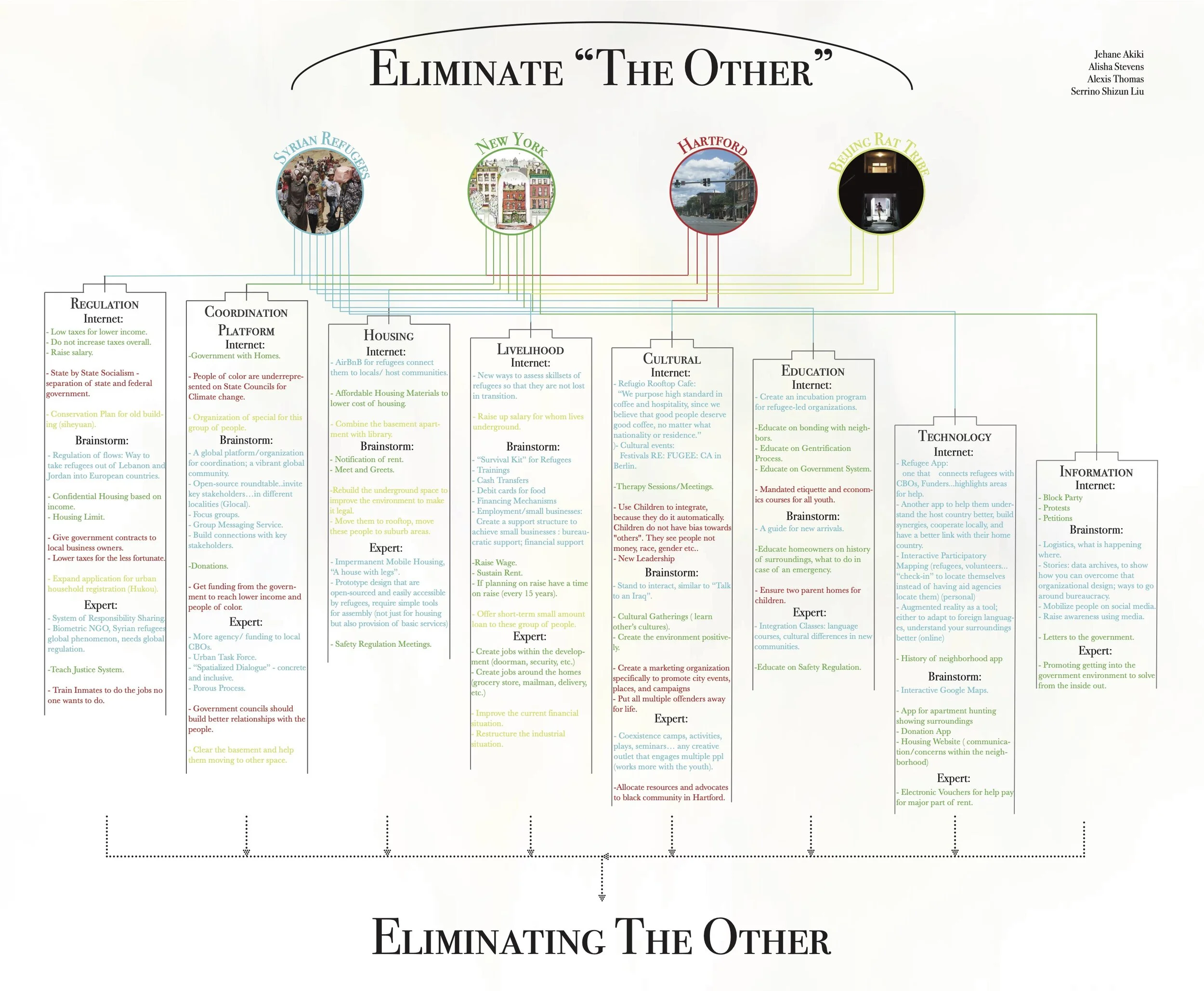Eliminating the Other
A design thinking inquiry into how to create inclusive urban environments
I started this project in my Masters program in a Design Thinking for People Guidance,Rules, and Regulations course I took at Parsons School of Design under Christian Schneider.
Working as a team, we were comparing different cases of marginalization, from gentrification in NYC, to migrant workers in China, and Syrian refugees globally to understand what is truly needed to come up with inclusive societies.
We engaged with different people, communities, experts and groups to get as many ideas as possible on how to create inclusion that we recorded in the above map.
We also sat down with different communities and had loose, open-ended interviews to understand how are different communities living together, how are they dealing with exclusion. We compiled them in our observation video here.
All of this showed us that there is no one way or solution for inclusion.
We realized that integration can never just be a ‘project’.
To truly produce a truly inclusive society, you need a holistic network that engages its participants in the process of decision making for collective life, targets different areas, and coordinates between all those initiatives.
We started designing our concept by putting the community back at the heart of the process. We employed the design thinking tools that we used in our own research as the basis for community engagement: assessing the status quo to define the problems then contrasting them with real-life observations in order to get to the heart of the issue, to ask people what they need, how they can be part of the solution, to then work with them towards finding one by rapidly prototyping and then tinkering them as we go along to evolve them into more efficient solutions.
We imagined this as an ongoing process of community engagement, ideation, and prototyping for the different needs of each community.
Diving deeper into this framework, I expanded it by taking the case of Syrian refugees and mapping out the different areas of focus needed to truly achieve integration. By consulting different stakeholders from refugees themselves to organizations working with them as well as host communities, I was able to map out the important points for an inclusive, livelihood-centered integration.
One of the great milestones of integration is decent employment — being able to be financially independent of all aid and generating enough income to sustain oneself and their family. To achieve this, there are factors that need to be present: the legal framework, receiving education, learning the language etc…
At the same time, the cultural/social integration remains a question mark even if economic integration happens. Certain societies have been able to co-exist with economic integration without cultural. This is the case of the United States where various ethnic communities are present and where someone can live in the US for decades without even speaking English or by only interacting with people from their own communities. Others push the social/cultural as a prerequisite for the economic, like in the case of Germany where learning the language is a non-negotiable to getting employment and where refugees and migrants are enrolled in social norm courses.


